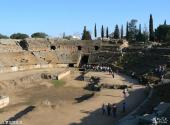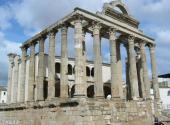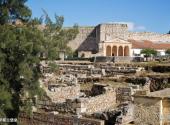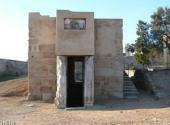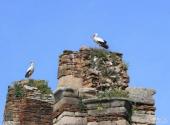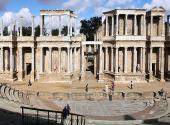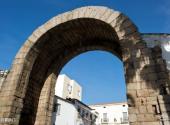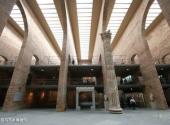
Scenic spot introduction:
Mérida, Spain, was founded in 25 BC as a colony of Roman Emperor Augustus. The ancient city is located on the banks of the Guadiana River in the southwest of the Meseta Plateau, in the ancient Extremadura region. At the intersection of the main Roman highways, the city planning was well-organized based on Roman norms. It is an outstanding example of a Romanesque capital during the ancient Roman Empire.Attractions distribution:
After the Spanish Campaign, Merida became the first capital of the Lusitania dynasty. Although the old city of Merida is not as completely preserved as Toledo, some of its ruins are still preserved, including the horizontal The Roman Bridge across the Guadiana River, the Roman Amphitheater, the Coliseum, the Great Circus, the Aqueduct, and Trajan's Arch are the most well-known. In addition, there are also Visigoths in the ancient city. and the Islamic Castle, a monumental building left by the Moors, all of which remain today as witnesses of Merida's glorious past.Scenic spot features:
Roman Empire, cultural tourism, historical tourism, ancient cities, ruinsAttraction Address
Travel Guide
Best time to visit:
All seasons
Tourist Transportation
Scenic spot location:
Europe>Spain
How to get there:
Merida Bus Station (Avdela Libertad) has buses to and from Seville (10 euros, 3 hours, seven departures a day), Madrid 20 euros, 4 hours, seven departures a day), and Cáceres (6 euros, 1 hour, daily generally) and Madrid (€19.02, 6 hours, four departures per day).
Merida Train Station (CalleCardero) has trains to and from Cáceres (3.3 euros, 1 hour, four departures a day), Seville (11 euros, one departure every 43/4 hours) and Madrid (€19.20, 6 hours, four departures per day).
Scenic area map:
3D real scene of scenic spot
Attraction Tickets
Merida weather forecast:
Understand in advance the latest weather forecast for Merida, where is located, and make perfect preparations for a pleasant journey ^-^

